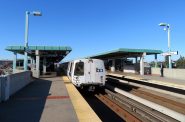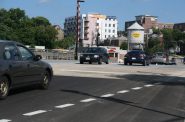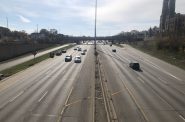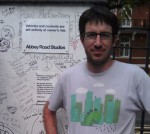The Future of Suburbia
All the city news you can use.
![Suburbia. Photo by David Shankbone (David Shankbone) [GFDL (http://www.gnu.org/copyleft/fdl.html) or CC-BY-SA-3.0 (http://creativecommons.org/licenses/by-sa/3.0/)], via Wikimedia Commons [ https://commons.wikimedia.org/wiki/File%3ASuburbia_by_David_Shankbone.jpg ]](https://urbanmilwaukee.com/wp-content/uploads/2017/10/1024px-Suburbia_by_David_Shankbone.jpg)
Suburbia. Photo by David Shankbone (David Shankbone) (GFDL) or (CC-BY-SA-3.0), via Wikimedia Commons
Manifesto for a New Suburbia: Curbed consults eight experts for ideas on how to rethink suburbia for the 21st century. Steve Davis posits that suburbs have untapped potential for becoming walkable, which can be achieved with form-based codes and converting malls into mixed-use developments. Jenny Schuetz proposes ways to make suburbs more age-friendly, like establishing retirement communities in inner-ring suburbs for proximity to medical care and social engagement. From lawns to repurposing dead malls to and streamlining regional cooperatives to combat suburban poverty, there’s a lot to be done to bring suburbs to the 21st century. (Alissa Walker | Curbed)
What Does Transportation Equity Mean? Steve Farber, assistant professor of human geography at the University of Toronto Scarborough, researches the social and economic outcomes of transport use in urban areas. He recently helped host Mobilizing Justice, a two-day workshop exploring the role of equity in transportation planning. Social justice, he notes, is rarely considered in the planning process and that socioeconomic impacts tend to be addressed only after a project is implemented. He also explores transport poverty, where transportation alternatives, especially transit, are too expensive, unreliable, or inaccessible. Farber believes emerging technologies can help address inequality, but is skeptical of certain technologies like autonomous vehicles. (Don Campbell | U of T News)
How Europe’s Megacities Stole Wealth: The shift from an industrial to a service-oriented economy is hitting hard in Europe. Between 1980 and 1995, industrial output in Paris fell by €5.5B, but the services sector grew by 20B. Milan is one of the many cities now centered on finance, tech, design, and innovation, but the city continues to prosper while the rest of the Italian economy stagnates. Successful European cities are drawing younger, more educated residents from other cities and towns, creating a damaging divide between ageing towns and the great cities. Experts fear that this continuation from the 1980s of wealth concentrating in cities will only worsen. (Julian Coman | The Guardian)
Indigenous Developer Resists Vancouver: The Squamish Nation was displaced from land near downtown Vancouver in the early 1900s, but won back 5 hectares of that land in the early 2000s. They recently partnered with developer Westbank to plan 11 towers on that land, the tallest of which would be 56 stories, with 80 percent of the land dedicated to public space. The development would only have 600 parking spaces. As a reserve, this land is free from Vancouver’s zoning regulations, so the Squamish aim to maximize the return from this land. The plan is in response to Vancouver’s restrictive single-family zoning seen throughout much of the city, providing more housing as the affordability crisis grows. (Editorial | The Globe and Mail)
New Urbanism, Plucked from the Garden: In the German city of Heilbronn, 80 gray acres of railyards and warehouses lined the Neckar River. For the past ten years, as the need for industrial lands diminishes, landscape architect and urban planner Oliver Toellner has been transforming this large industrial plot into a new park and urban district for 3500 residents and 1000 jobs. The project is coming about because of the Federal Garden Show, a biennial German event described as a “six-month-long plant-themed Olympics.” The horticultural event led way for a Berlin-based design firm to master plan the site, which entails pedestrianizing the banks of the river and adding marsh habitat for various bird species. (Nate Berg | Landscape Architecture Magazine)
Quote of the Week
None of us knew anything about banking to begin with, but we haven’t let Wall Street gaslight us into thinking that this is impossible. North Dakota showed a hundred years ago that it was possible, and they did it without fintech, they did it as grain farmers in arguably a very difficult era.
–Jacqueline Fielder in Next City discussing the potential for a publicly owned bank in San Francisco.
This week on the podcast, Steven Higashide discusses his new book Better Buses: Better Cities.
Want more links to read? Visit The Overhead Wire and signup. (http://dtrnsfr.us/2iA8Yas)
If you think stories like this are important, become a member of Urban Milwaukee and help support real, independent journalism. Plus you get some cool added benefits.
Urban Reads
-
Oakland Launches Universal Basic Mobility Program
 Jul 21st, 2024 by Jeff Wood
Jul 21st, 2024 by Jeff Wood
-
How Traffic Noise Impacts Children’s Brains
 Jul 1st, 2024 by Jeff Wood
Jul 1st, 2024 by Jeff Wood
-
Number of Super Commuters is Rising
 Jun 22nd, 2024 by Jeff Wood
Jun 22nd, 2024 by Jeff Wood




















